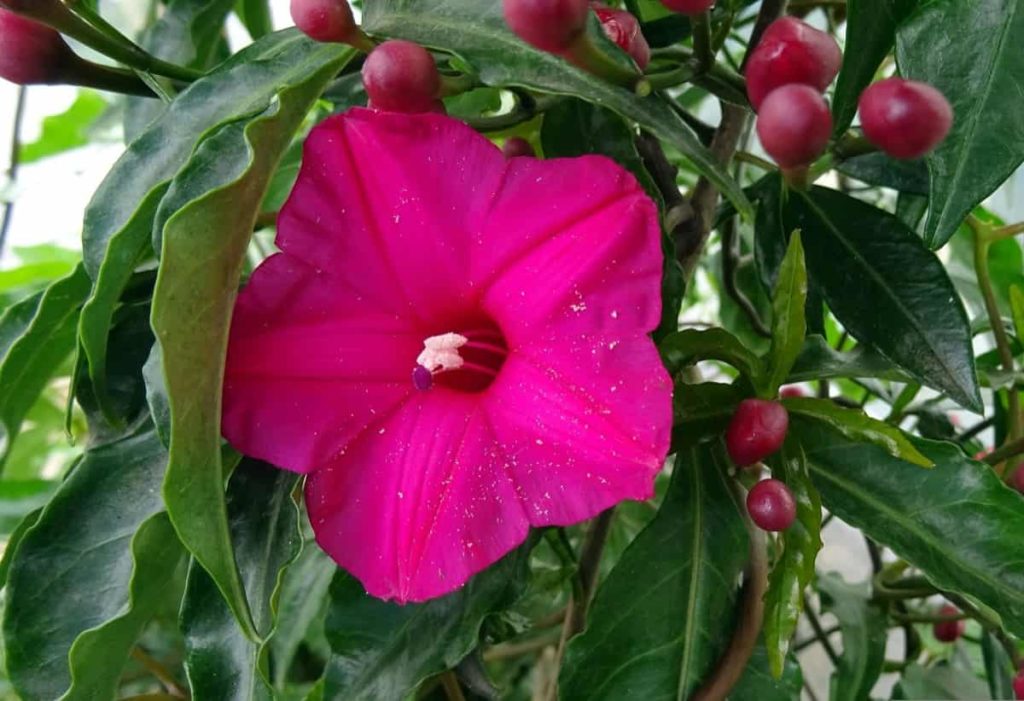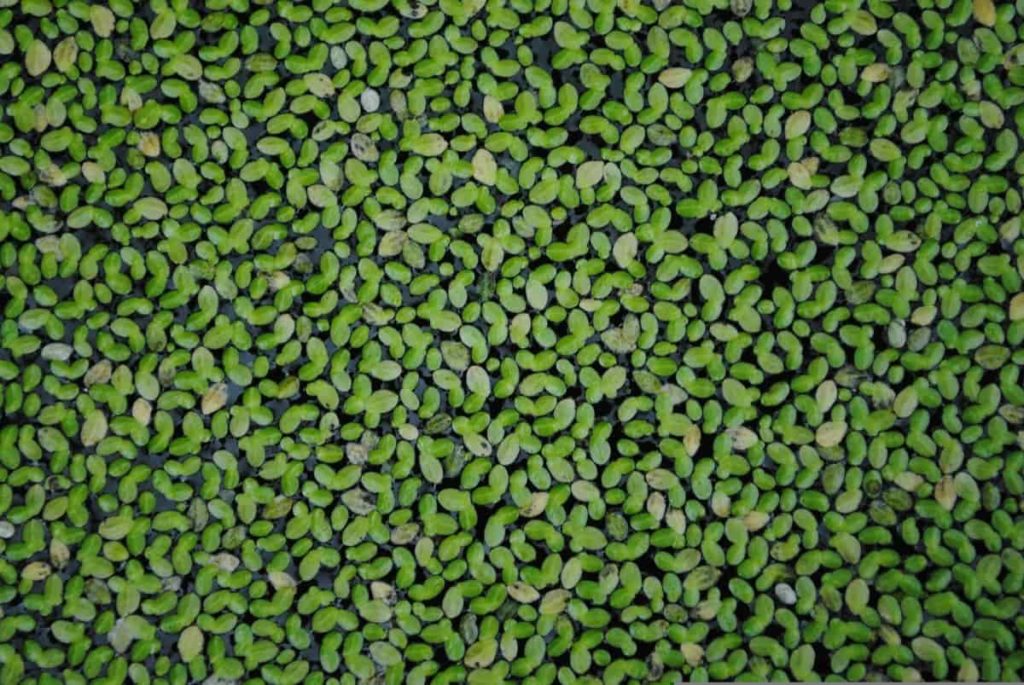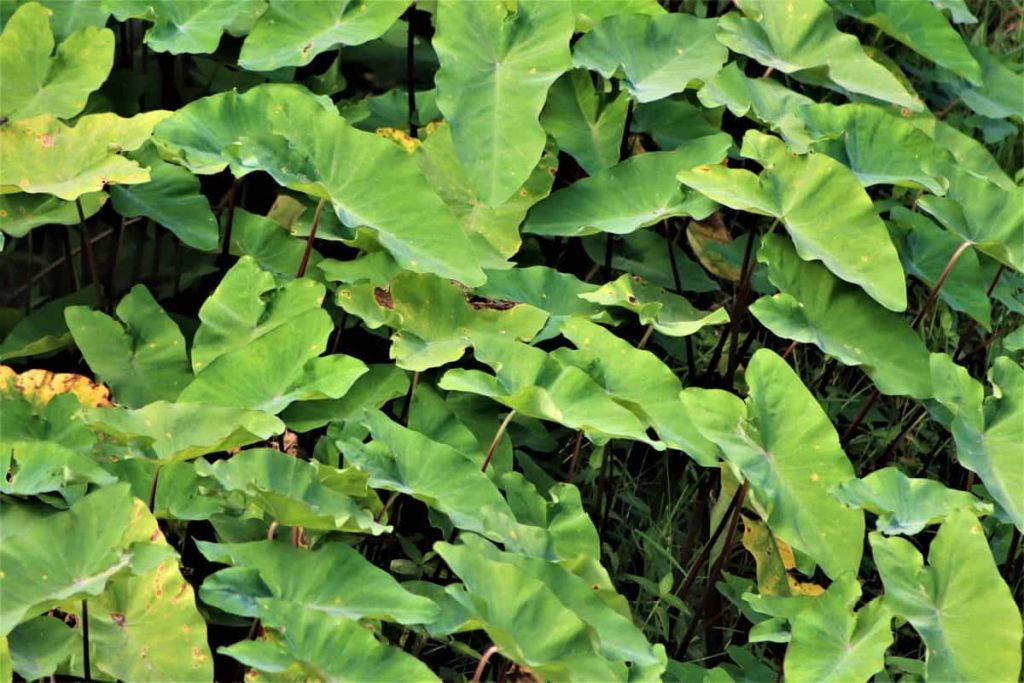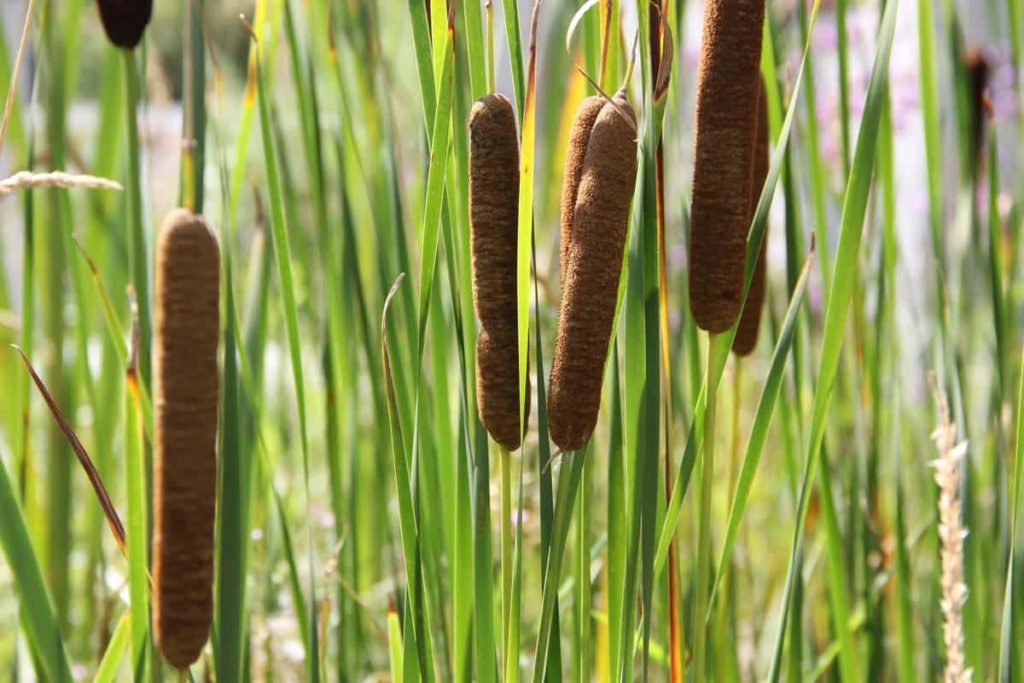Beautiful and easy to look after, water plants are gorgeous and attractive. They can add much interest to a pond or water feature and improve the air quality. A plant is an essential part of the biosphere, the part of the earth occupied by living things. There are different categories of plants. We are most familiar with terrestrial plants-plants that grow on land. In addition, epiphytes (plants that live on trees), lithophytes (plants that live in or on rocks), and aquatic plants are also common.
Plants that grow in water gardens or aquariums are ideal for growing indoors. In water tanks, water terrariums, or indoor ponds, many plants that grow in water can be grown. The only difference between indoor and outdoor aquatic plants is their required sunlight. Let’s check out the top 26 best water plants for backyard ponds and indoors below.
Choose water plants that grow well in the shade when growing them indoors. Aquarium plants typically grow under artificial light, but the tanks are usually covered. The shady conditions of fish tanks require plants to grow underwater. Water plants need full sun on sunny windowsills to grow well in water terrariums. A water plant can be categorized into four types.
Emergent water plants: The roots of these plants are usually found near the edge of shallow water, also known as marginal plants. Above the water level, the foliage of the plant mainly grows.
Submerged aquatic plants: These water plants are also known as oxygenating pond plants. Freshwater and saltwater aquatic plants, including their stems and leaves, grow entirely underwater.
Free-floating pond plants: Some flowering aquatic plants float freely in the water. Minerals are absorbed from the water of ponds and lakes by their roots.
Floating-leaved water plants: Marine plants are the most beautiful and striking water plants. Water lilies and lotuses, for example, have roots at the bottom of the pond. Long stems reach the pond’s surface, where their leaves and flowers appear to float.
Top 26 best water plants for backyard ponds and indoors
Water lily
There is something beautiful about the sight of a few water lilies floating on the surface. Additionally, water lilies can keep a backyard pond healthy; the shade they provide shelters fish and keeps the water clear by preventing algae growth. Water lilies can be grown in large tubs or stock tanks on the patio without a pond. It is common to see water lilies in pink, white, yellow, and red colors. Easy to grow and dependable, hardy lilies make an excellent choice for beginners.
In case you missed it: How to Grow Rose Plants from Cuttings to Harvest: Planting Guide for Beginners

Water cabbage
The water lettuce, also known as water cabbage, is an excellent aquatic plant. These plants can create a maze of hanging roots with little effort, creating an ideal environment for fry and nervous fish. A rosette of leaves floats on top of the water, with dense roots submerged beneath. The diameter of water lettuce can reach up to 10 inches. Plants with silky hairs on their surface trap air, boost buoyancy and have no stems or leaves.
Powdery thalia
As a spectacular pond plant, powdery thalia is commonly used in household water gardens. Water canna, or powdered alligator flag, is a tall perennial that can reach a height of 6 feet. It is possible to plant them on the pond’s edge or submerge them up to 18 inches underwater. A deep, healthy loam is preferred by Thalia, which thrives in full sun. Due to its exotic appearance, powdered thalia gives backyard ponds a tropical feel.
Cardinal flower
When its roots are constantly wet, this easy-to-care-for perennial thrives in almost any climate. Their striking colors make them a must-have for feature ponds and landscaping projects. Cardinal Flowers have gorgeous red flowers that stand out in any garden. Full sun is best for Cardinal flowers, although some shade is tolerated. Ideally, it should be planted in a deep, submerged pot.
In case you missed it: How to Prepare the Soil for Cantaloupe Plants: Best Soil Mix, pH, and Compost

Water wisteria
Water wisteria is becoming increasingly popular in aquariums and is easy to grow. If you want an overground comparison, this aquatic pond plant looks like mugwort because of its segmented foliage. Besides oxygenating the water, this aquatic plant provides shelter for little creatures. Fish enjoy swimming between their leaves, which looks great from above water. Growing it is easy, which is why it is so popular. Hence, it is an excellent choice due to its low maintenance but professional-looking appearance.
Rough horsetail
Adding rough horsetail to outdoor ponds gives them a vertical presence. Similar to bamboo but thinner and higher, it has vertical green stems with horizontal bands. As well as being able to thrive in moist environments, horsetail also does well in standing water. Like ferns, horsetail reproduces via spores rather than seeds. Despite this, horsetail spreads aggressively. Keep it from taking over other planted areas by using soil barriers or other sorts of confinement.
Calla lillies
Plants like these are well-known for their gorgeous leaves, luscious blossoms, and low maintenance requirements. Despite their name, calla lilies do not belong to the Liliaceae family. The hybrid-colored Callas require drainage, while the white Callas are semi-aquatic. In the former case, the plants can be completely submerged in water, whereas in the latter case, the water should only touch the top layer of the plants.
Pickerel rush
Any pond would benefit from the presence of this elegant flowering plant. Tall, sturdy, yet slim stems are topped with attractive purple, pink or white flowers, adding height and character to pond edges. Hardiness zones are not a problem; they thrive in almost any environment. Plant pickerel rushes in a deep pot and is placed in the pond. Add gravel to the top to prevent the soil from floating in the pond.
Mosaic plant
Mosaic plants are also floating aquatic plants worth considering. It gets its name from its oddly shaped leaves that resemble mosaic tiles. There are red and green diamond-shaped leaves on these plants. During the summer, however, these plants bloom yellow cup flowers that add life to the pond. Under the leaves of the mosaic plant, the fish in the pond can also hide. Mosaic plants are tropical, so they can’t survive in cooler climates. However, a pH range of 5 to 7.5 is ideal for them, enjoying the full sun and some shade.
Blue Iris
Blue iris are also popular landscaping plants. With their large flowers, they create a stunning image when spring arrives. Adding these light blue to purple blooms to any pond will be a delight. These plants can grow to about 20-30 inches tall and thrive in shallow waters. This plant is perfect for marginal areas. There is, however, a tendency for blue iris to spread. Keeping them under control requires planting them in pond baskets. Although they enjoy the full sun, they appreciate shade in hotter climates.
In case you missed it: Terrace Garden Cost in India: How to Setup, Roof Garden Design, Best Plants to Grow

Creeping jenny
In addition to being an excellent pond plant, creeping jenny is primarily grown for ground cover. With its bright green foliage, it creates a striking image. Also, it looks great at the edge of a pond or as a filler plant for rockier water features. It spreads about 18 inches with its proliferating leaves.
There should be some shade or full sun for Creepy Jenny. Plants of this species grow best in shallow water and can reach a height of four to six inches. Flowers and some leaves die off as winter approaches. It is essential to remove these before too much organic matter accumulates in your pond.
Japanese sweet flag grass
Many gardeners use ornamental grasses to spruce up smaller areas, and there is no difference between ponds and water gardens. There is no better marginal plant than Japanese sweet flag grass. Perked up along the edge of a pond or partially submerged, this plant grows well. If the Japanese sweet flag grass is kept wet, it remains healthy and vibrant. However, it can spread over the pond quickly after it has become established, so keep an eye on it to control it from spreading.
Bladderwort
Plants such as these can be submerged. They produce yellow flowers that stick out of the water like orchids. Bladderworts are an excellent choice for those who are open to trying something outlandish. Of all the carnivorous plants, bladderwort has the most complicated trapping mechanism. Mutated leaves that resemble bladders make up the trap. The bladders trigger whenever mosquito larvae or other water insects touch these trigger hairs. In addition to being attractive, their caring is easy.
Duckweed
Duckweed is a plant that grows in water. This floating plant can be scooped out when it covers the water surface. Medicine is made from a whole fresh plant. Duckweed treats bronchitis, liver disease, rheumatoid arthritis, gout, and swelling (inflammation) of the central airways in the lung. Despite this, there is no good scientific evidence to support these uses.
In case you missed it: Top 20 Steps to Boost Your Guava Fruit Yield: How to Increase Fruit Size, Tips, and Ideas

Pitcher plant
When adding other aquatic carnivorous plants to your pond, pitcher plants are excellent. The tube-like leaves of these plants capture various types of prey. The most popular plants among gardeners are Cobra Lilies and Purple Pitcher Plants. There will be a spectacle around the pond or in the water features. These plants tolerate various conditions as long as they don’t dry out. These plants can also be grown as marginal plants. Keep the soil moist, or submerge the pots in the water.
Giant Brazilian rhubarb
There are massive leaves on this massive aquatic pond plant, which look a bit like zucchini leaves but are much more significant. Grow giant Brazilian rhubarb if you have a sizeable boggy area and don’t know what to do with it. Its leaves can measure up to 11 feet across. These plants have an exotic and even prehistoric look and a powerful presence. In addition, the young stems are edible, which is why it is called Brazilian rhubarb. In the right conditions, the massive blooms look like brown and reddish squirrel tails.
Rodgers flower
Rather than rushes, Rodgers flower offers pretty flowers and foliage like a pitcher plant. Water gardens against a house wall may benefit from a more suitable backdrop. Rodgers flower, for example, can be planted at the back of a pond. These plants are more famous for their attractive, large, abundant leaves, and Rogers flowers are good-sized perennials. Bog plants make far better backgrounds than house walls in most cases.
Rush
The rush is one of the most common plants on the banks of lakes and rivers. It usually has long stems and thin leaves, but there are also curly, and dwarf rushes if you want a little variety. Also, don’t forget the variegated rush, which has two colors, cream, and green. Even though these plants need full sun, they will tolerate even strong sunlight. These plants can grow up to 4 feet in height.
Taro pond plants
Taro grows well in full to part sun and is available in several varieties. Although it is considered a tropical plant, it can be brought indoors during the winter in colder climates. Then, when summer arrives, move the taro back to the pond by placing it near a sunny window. A leafy, 48-inch water lover, it always makes a striking appearance in the water garden.
In case you missed it: Top 20 Online Plant Nurseries in India: Best and List

Papyrus
It is possible to find specimens that straddle the marginal and bog categories. Marginal plants often don’t need to stand in water; certain bog plants can stand in a bit of water. A marginal plant is the papyrus plant. Planting papyrus in water is a good idea. It can also be grown in the ground or a container, just as you would grow any other specimen.
Canna Lily
It’s striking red, yellow, or orange flowers and fantastic foliage make it an excellent choice for wetlands. Of course, it is famous for its garden pond. However, there is a tropical feel to the foliage of these exotic plants as well. Their large, shiny appearance can be green, red, purple, or a combination of colors. It is best for these plants to have full sun, but they can also tolerate partial shade. These plants can reach up to a height of 6 feet, and in ideal conditions, they can reach 8 feet tall.
Water hawthorn
It is an elegant, exotic, and original deep water plant. Like little boats, its oval leaves rest on the water’s surface. As opposed to hovering above them, the flowers look very unusual. On a white stem that looks like butterfly wings or rabbit ears in an upright row, they are white with dark purple gynoecium and sweet smelling. The delicate flowers of these plants add a touch of originality and great tranquility to the pond.
Water hyacinth
Free-floating water plants like water hyacinth are beautiful. This plant has elliptical leaves, some of which are curled, very fleshy, and emerald green in color. They will appear just above the water and point upward. Something is striking about its flowers. Like hyacinths, they bloom in clusters of only a few, large blooms with six petals each. The petals are light magenta except for the top, which has a large yellow dot surrounded by a violet-blue patch. Thin it down regularly since it propagates quickly.
Cattail
Another classical aquatic pond plant is the cattail or bulrush. Inflorescences resemble fluffy tails and grow above upright, long, blade-like leaves in a sausage shape. With 30 different species, it forms large colonies along the sides of lakes and ponds. You can eat the cattail shoots and add color and texture to your pond planting. These plants can grow well in full sun. Despite this, they can tolerate some partial shade for short periods. These plants grow between three and seven feet tall, depending on the species.
In case you missed it: Top 20 Online Plant Nurseries in India: Best and List

Arrowhead
There is no doubt that Arrowhead is a very striking deep water plant. As it grows above the surface, its arrow-shaped leaves give the pond a dynamic touch. As they point upward, they give your pond’s foliage a lot of depth. Some species have white or yellow flowers. There are 30 different species, making it an excellent plant for ponds in all kinds of settings.
Water Lentils
A water lentil is a tiny round plant that grows on the water’s surface and fills it with green. It is the most playful of all water plants and needs fresh, clean water to grow. Water lentils can be found in many different species and genera. Drop a few in the pond, and they will quickly propagate and become the glittering backdrop for all your bigger water plants. They can quickly spread the whole surface in weeks if you don’t thin them.
Conclusion
Pond ecosystems require aquatic plants to maintain a balance. In addition to producing dissolved oxygen in the water, they protect small fish and invertebrates in the pond, making them the base of the food chain. They also hold the soil in place with their roots. In addition to absorbing required nutrients from the water, water plants also absorb pollutants and heavy metals. Last but not least, aquatic plants in the pond enhance its aesthetics. A wide variety of emergent and shoreland plants provide attractive flowers, exciting structure, color, and depth.
- Gardening Techniques in Planting Vegetables
- Where to Place Indoor Plants in Your Home
- How to Grow Tomatoes Organically at Home: A Comprehensive Guide
- Organic Gardening on a Budget: Low-Cost Methods and Materials
- Gongura Seed Germination and Planting Methods
- Cabbage Seed Germination and Selection
- Broccoli Seed Germination and Selection
- Asparagus Seed Germination and Variety Selection
- Seasonal Flower Gardening: Best Practices for Spring, Summer, Fall, and Winter
- How to Grow Hibiscus from Flower
- Plantation Ideas for Home Decoration: A Beginners Guide
- Flower Garden Designs and Layouts for Beginners
- Planting and Spacing Techniques in Papaya: A Beginner’s Guide
- Growing Gold: Essential Techniques for Planting Pineapples
- How to Make Kalanchoe Plant Bushy: Home Remedies and Solutions
- 11 Reasons Why Your Gardenia is Not Blooming: Home Remedies and Solutions
- Eco Elegance: The Guide to Designing a Drought-Tolerant Landscape
- Gardening on a Slope: Strategies for Hillside Landscaping
- Nourish and Flourish: Top Organic Mulches for Thriving House Plants
- Everything You Want to Know about Indian Mogra Flower: Discover Uses and Growing
- Green Thumb Success: Expert Tips for Cultivating Greenhouse Pumpkins All Year Round
- Maximize Growth & Flavor: The Ultimate Guide to Companion Planting in Herb Gardens
- How to Control Rhododendron Problems Naturally: Home Remedies and Organic Ways to Fix Them
- Natural Magic: The Remarkable Benefits of Cinnamon for Plants
- Best Steps to Revive Dying Tulip with Natural and Organic Treatment
- 10 Reasons Why Your Angel Trumpet is Not Blooming: Remedies and Treatment
- How to Fix Periwinkle Leaf and Flower-Related Problems: Natural Remedies and Solutions
- How to Fix Zinnias Leaf and Flower Problems: Discover Natural and Home Remedies
- Organic Steps to Induce Lemon Tree Flowers: A Comprehensive Guide
- Bloom Booster: Crafting the Perfect Homemade Bougainvillea Fertilizer
- Optimizing Growth: A Guide to Applying NPK Fertilizer for Potted Plants
- 10 Best Homemade Fertilizers for Rubber Plant: DIY Recipes and Application Method
- How to Boost Female Pumpkin Flowers: Effective Steps for More Flowers and High Yields
- Transform Your Indoor Garden: Top Benefits of Pink Salt for Houseplants
- 10 Best Homemade Fertilizers for Peacock Plants (Calathea): Easy DIY Guide
- Unlock Blooms: 9 Reasons Why Your Potted Chrysanthemum is Not Blooming